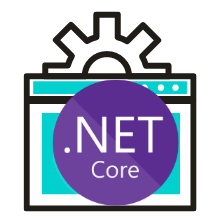12
DecTop 60 HTML Interview Questions and Answers
HTML is the backbone of web development, used to structure content on the web. Understanding HTML is essential for anyone looking to build or work with websites, making it a key topic for interviews. Mastering HTML concepts can give you a strong foundation in web development.
In this HTML tutorial, I’ll walk you through common HTML interview questions and answers to help you prepare effectively. Don’t worry. 80% of entry-level web development jobs require HTML proficiency. Enroll now in our Free HTML Course with Certification to stand out!
Ready to boost your confidence and ace that interview? Let’s get started!
Top 60+ HTML Interview Questions & Answers
1. What is HTML?
HTML stands for Hypertext Markup Language. It is the standard markup language used to create and design web pages. By using HTML, you can structure your web pages and specify how the content should appear when displayed on the browser. It essentially serves as the backbone of any website.
2. What is !DOCTYPE?
A DOCTYPE, short for document type declaration, informs the web browser about the version of HTML used in the web page. In HTML5, the DOCTYPE declaration is case-insensitive and has a simple syntax as shown below:
<!DOCTYPE html> 3. What is the current version of HTML?
The latest version of HTML is HTML5, which introduces new features such as semantic elements, multimedia support, and enhanced performance. You can explore more about it here.
4. What are the different markup languages available?
Here are some popular markup languages:
- HTML: Hypertext Markup Language
- KML: Keyhole Markup Language
- SGML: Standard Generalized Markup Language
- MathML: Mathematical Markup Language
- XML: eXtensible Markup Language
- XHTML: eXtensible HyperText Markup Language
5. What are HTML tags?
HTML tags are the building blocks of any HTML document. They define elements and attributes and are generally used in pairs. The opening tag marks the start, and the closing tag marks the end. Tags are enclosed within < and >, making them easy to identify.
6. What are attributes in HTML?
Attributes in HTML provide extra information about an element, andinput attributesare specifically used to define various properties of form input elements.These attributes are always included in the opening tag and consist of a name and a corresponding value. For example, the style attribute can define the color of the text within an input field.
7. What are the void elements in HTML?
Void elements in HTML are tags that don’t need a closing tag. They stand alone and don’t wrap around content.
Examples
- <br> → Adds a line break
- <img> → Displays an image
- <input> → Creates an input field
- <hr> → Adds a horizontal line
- <meta> → Provides metadata
7. What are the main components of an HTML document?
The key components of an HTML document include:
- Tags: Define the elements
- Attributes: Provide additional details
- Content: Visible text or multimedia
- Comments: Non-visible notes for developers
8. Explain the difference between HTML elements and HTML tags.
| HTML Elements | HTML Tags |
| HTML elements define the structure and content of a web page. | HTML tags are used to mark up the beginning and end of an element. |
| They consist of opening tags, content, attributes, and comments. | Tags are enclosed in angle brackets and have names like <div> or <p>. |
9. What is the difference between <div> and <span> elements?
The <div> element is a block-level element used for grouping and structuring content, while the <span> element is an inline element used for styling specific parts of the content.
<div>
<h2>Section Title</h2>
<p>This is a paragraph within a div element.</p>
</div> Example of <span> usage:
<p>This is a <span style="color: blue;">blue</span> text.</p> 10. What is the purpose of HTML in web development?
The primary purpose of HTML is to provide a framework for structuring web pages. It organizes content using elements, tags, and attributes, making it possible for browsers to render pages in a user-friendly format. Without HTML, creating interactive and visually appealing websites would not be possible.
11. How do you create a hyperlink in HTML?
To create a hyperlink in HTML, you use the <a> tag along with the href attribute. The href attribute specifies the destination URL. Hyperlinks are essential for connecting different pages or websites, making navigation seamless. Here's the syntax:
<a href="https://www.example.com">Link Text</a>For example, if you want to create a link to Google's homepage, you can write:
<a href="https://www.google.com">Visit Google</a>12. Explain the difference between <strong> and <em> tags.
The <strong> tag highlights text with strong importance and typically displays it in bold. On the other hand, the <em> tag is used for emphasized text and usually renders it in italics. These tags are crucial for improving SEO and accessibility as they convey meaning to search engines and screen readers.
<strong>Important Text</strong>
<em>Emphasized Text</em>13. What is the structure of an HTML tag?
Every HTML tag consists of three parts: an opening tag, the content, and a closing tag. Here's a simple structure:
<tagname>Content</tagname>For example
<p>This is a paragraph.</p>14. How are comments added in HTML?
To add comments in HTML, use the following syntax:
<!-- This is a comment -->- Single-line comment: Used for brief notes.
- Multi-line comment: Used for detailed explanations.
15. What is an HTML layout, and how does it help structure a webpage?
An HTML layout defines the structure of a webpage by organizing content into different sections. It helps users navigate easily and improves readability. The main elements used in an HTML layout are:
- <header> – Contains the website logo, title, or navigation menu.
- <nav> – Holds navigation links to other pages.
- <main> – Represents the primary content of the page.
- <section> – Divides content into meaningful parts like articles, blogs, or categories.
- <aside> – Used for sidebars, advertisements, or additional links.
- <footer> – Contains contact details, copyright information, or links.
These elements help in creating a clean, structured, and user-friendly webpage.
16. What are the best ways to optimize the loading of website assets?
Website assets (CSS, JavaScript, images, fonts) should be optimized for faster loading and better performance. Here are the best techniques:
- Minify CSS, JavaScript, and HTML – Remove unnecessary spaces and comments to reduce file size.
- Enable Lazy Loading – Load images and videos only when they appear on the screen.
- Compress Images – Use formats like WebP or tools like TinyPNG to reduce file size.
- Use a Content Delivery Network (CDN) – Distribute assets across multiple servers worldwide for faster access.
- Enable Browser Caching – Store static files on the user’s device to prevent reloading on every visit.
- Optimize JavaScript and CSS – Avoid unused scripts and load necessary files asynchronously.
These methods improve page speed, user experience, and SEO rankings.
17. Which HTML tags are used for formatting text and content?
HTML provides several formatting tags to enhance the appearance of text:
- <b> – Bold text
- <i> – Italic text
- <u> – Underlined text
- <strong> – Important (bold) text
- <em> – Emphasized (italic) text
- <mark> – Highlighted text
- <small> – Smaller text size
- <sub> – Subscript text (e.g., H₂O)
- <sup> – Superscript text (e.g., x²)
- <blockquote> – Blockquote for long quotations
- <pre> – Preformatted text (preserves spaces and line breaks)
These tags help in styling text and improving readability.
18. How can multiple rows or columns be merged into a single row or column in an HTML table?
To merge table rows or columns, use:
- colspan="n" – Merges multiple columns.
- rowspan="n" – Merges multiple rows.
19. What is the use of the alt attribute in images?
The alt attribute provides alternative text for an image. If the image fails to load, the browser displays the alt text. It is also used by screen readers to describe images, improving accessibility and SEO.
<img src="example.jpg" alt="A descriptive text about the image">20. Describe various HTML tags used to display a table.
In HTML, you can use several tags to create and style an HTML table effectively. Here's a list of the important table tags you need to know:
- <table>: This tag is used to define a table.
- <tr>: It is used to define a row in the table.
- <th>: It defines a header cell, usually displayed in bold and centered.
- <td>: This tag defines a standard cell in the table.
- <caption>: It provides a title or caption for the table.
- <colgroup>: It groups columns for applying styles or properties.
- <col>: It specifies column properties when used with <colgroup>.
- <thead>: It groups the header content in the table.
- <tbody>: It groups the body content in the table.
- <tfoot>: It defines the footer content in the table.
Tables help you organize data neatly, making it easier for users to interpret information.
21. What are the different types of lists in HTML?
HTML provides three main types of HTML lists to organize items effectively:
- Unordered List (<ul>): This type of list uses bullet points to display items.
- Ordered List (<ol>): It organizes items in a specific sequence, usually with numbers or letters.
- Definition List (<dl>): This list displays items like a dictionary, with terms and their definitions.
Lists are essential for structuring information, improving readability, and enhancing user experience.
22. What are the various levels of heading tags?
HTML offers six levels of heading tags, ranging from <h1> to <h6>. Here's a breakdown:
- <h1>: This is the highest level, usually used for main titles. It grabs the most attention.
- <h2>: Use this for subheadings under the main title.
- <h3>: This is often used for smaller sections or subtopics.
- <h4>, <h5>, and <h6>: These are for less important headings or minor subsections.
Using heading tags helps search engines and users understand the structure of your content better.
23. What is the difference between HTML and HTML5?
The difference between HTML and HTML5:
| HTML | HTML5 |
| Stores temporary data in cookies. | Supports offline storage in SQL databases and application cache. |
| Does not support running JavaScript in the browser. | With the Web Worker API, JavaScript can run in the browser. |
| Compatible with older browsers. | Designed for modern browsers like Chrome, Firefox, and Safari. |
| Lacks attributes like charset, async, and ping. | Includes these and many other attributes. |
HTML5 introduces more features and functionalities, making it ideal for modern web development.
24. What is the purpose of the <img> tag in HTML?
The <img> tag is used to embed images into your HTML documents. Here are the essential attributes:
- src: Specifies the image's source URL.
- alt: Provides alternate text that appears if the image cannot load. It also helps with accessibility and SEO.
The <img> tag is self-closing, meaning it does not need a separate closing tag.
<img src="example.jpg" alt="Example Image">
25. What is the purpose of the <form> element in HTML?
HTML Forms are crucial for creating a user-friendly interface that allows users to input data. It’s the building block for most interactive web applications. Inside the <form> tag, you can include various HTML form elements like text fields, buttons, checkboxes, etc., to gather information from users. Once the data is filled in, the form is submitted to the server for further processing, like authentication or storing user information.
<form action="/submit" method="post">
<label>Username: <input type="text" name="username"></label><br>
<label>Password: <input type="password" name="password"></label><br>
<input type="submit" value="Submit">
</form>26. What are HTML entities? Provide an example.
HTML entities represent special characters using either a named entity or a numerical code. For instance, the less-than sign (<) can be written as <.
27. Explain the difference between the GET and POST methods in HTML forms.
The difference between the GET and POST methods in HTML forms
| GET | POST |
| The 'GET' method sends form data as part of the URL query string. | The 'POST' method sends form data within the HTTP request body. |
| The data length is limited in 'GET'. | 'POST' handles larger amounts of data. |
| The data is visible to the user in the 'GET' method. | The data is hidden from the user in the 'POST' method. |
28. What is the purpose of the <meta> tag in HTML?
The <meta> tag provides essential metadata for the HTML document, like specifying the character encoding, setting the viewport, or including author information. It’s a great way to optimize your web page for search engines and improve performance.
29. How do you create a numbered list in HTML?
Creating a numbered list in HTML is easy! You just need to use the <ol> tag, followed by <li> for each list item. Here's an example:
<ol>
<li>First item</li>
<li>Second item</li>
<li>Third item</li>
</ol>
30. Explain the difference between the <header>, <nav>, <main>, and <footer> elements.
The difference between the <header>, <nav>, <main>, and <footer> elements are:
- <header>: It contains introductory content or navigation links for a section or the entire page.
- <nav>: It is used to define navigation links to other pages or sections within the same page.
- <main>: It holds the main content of the webpage, excluding headers, footers, and navigation.
- <footer>: This element is used to include information like copyright, author details, or footer-related content.
31. Explain the difference between inline elements and block-level elements in HTML.
The differences between inline elements and block-level elements in HTML are:
| Inline Elements | Block-Level Elements |
| Inline elements don’t start on a new line and flow within the text. | Block-level elements begin on a new line and take up the full width of their container. |
| Inline elements don't have top and bottom margins. | Block-level elements have top and bottom margins. |
| Examples: <span>, <a>, <strong>. | Examples: <div>, <p>, <h1>..<h6>. |
Read More: HTML Inline and Block Elements: Explained with Examples
32. What is the purpose of the viewport meta tag?
The viewport meta tag plays a key role in making your webpage responsive. It ensures that the page content is displayed correctly on different devices, especially mobile phones. Here's an example:
<meta name="viewport" content="width=device-width, initial-scale=1">
33. What is the difference between <div> and <span> in HTML?
The difference between <div> and <span> in HTML are:
| <div> | <span> |
| The <div> tag is a block-level element used to group larger sections of content. | The <span> tag is an inline element used to style or target smaller chunks of text or content. |
| The <div> tag takes up the full width of its container and starts on a new line. | The <span> tag does not start on a new line and only takes up as much space as its content. |
| <div> is used for layout purposes or when you need to wrap larger sections. | <span> is typically used for styling small sections of text or other inline elements. |
34. How do you embed an image in HTML?
Embedding an image in HTML is done using the <img> tag. You provide the path to the image using the src attribute, and you can also use the alt attribute for an alternate text description. Here's an example:
<img src="image.jpg" alt="A beautiful scenery">
35. What are data attributes in HTML?
Data attributes in HTML are custom attributes that allow you to store additional information on HTML elements. These attributes are prefixed with data- and can be accessed easily using JavaScript or CSS. They provide a convenient way to add extra data to elements without affecting their visual representation. For example, you can use them to store configuration options or pass dynamic values to scripts.
36. Explain the difference between HTML and XHTML.
The differences between HTML and XHTML are:
| HTML | XHTML |
| HTML stands for HyperText Markup Language. | XHTML stands for eXtensible HyperText Markup Language. |
| HTML is more forgiving with syntax, allowing shorthand notations. | XHTML follows strict XML rules, requiring all elements to be properly nested and closed. |
| HTML allows rendering even with minor syntax issues. | In XHTML, even small syntax errors can lead to parsing failures, preventing the document from rendering. |
| HTML structure is lenient. | XHTML adheres strictly to XML document structure rules. |
| HTML is compatible with most web browsers. | XHTML has stricter syntax rules, making it less compatible with older browsers. |
| HTML is widely used in general web development. | XHTML is commonly used where strict XML compliance is required, such as in applications and web services. |
37. How do you embed audio and video in HTML?
- Audio: To embed audio in HTML, use the <audio> element with the src attribute to specify the audio file. You can also include optional controls like play, pause, and volume.
<audio controls>
<source src="audio.mp3" type="audio/mpeg">
</audio>- Video: To embed video in HTML, use the <video> element with the src attribute to specify the video file. Similar to the audio element, the controls attribute allows users to control playback.
<video controls width="320" height="240">
<source src="video.mp4" type="video/mp4">
</video>| Read More: Media and Graphics in HTML |
38. What is the purpose of the <figure> and <figcaption> elements?
The <figure> element is used to encapsulate content such as images, videos, or diagrams, allowing them to be treated as standalone pieces. The <figcaption> element provides a caption or description for the content within the <figure> element, making it more accessible and providing context.
39. What is the purpose of the rel attribute in the <a> tag?
The rel attribute in the <a> tag specifies the relationship between the current document and the linked document. It helps search engines and browsers understand the connection between pages and the type of link being used. For example, using rel="nofollow" prevents search engines from following the link.
Example
<a href="styles.css" rel="stylesheet">Link to stylesheet</a>40. What is the purpose of the scoped attribute in the <style> tag?
The scoped attribute restricts the scope of styles defined within the <style> tag to only the parent element it is placed in, typically used with the <template> element. This feature helps to avoid unwanted styles affecting the rest of the page.
<template>
<div>
<style scoped>
div { color: red; }
</style>
<div>This text will be red.</div>
</div>
</template>41. What is the purpose of the <iframe> element?
The <iframe> element allows you to embed another HTML document within your current document. It's often used to display external content such as videos, maps, or third-party widgets within your webpage. It helps in integrating rich media without leaving the page.
42. How do you create a form with input fields in HTML?
To create a form in HTML, you use the <form> element. Input fields are added using elements like <input>, <textarea>, and <select>. Forms are essential for gathering user information, such as usernames, passwords, or comments.
Example:
<form action="/submit" method="post">
<label for="username">Username:</label>
<input type="text" id="username" name="username">
<input type="submit" value="Submit">
</form>43. What is the difference between <script> and <noscript>?
The<script>tag is used to include JavaScript code within an HTML document, allowing you to add interactivity and dynamic content and manipulate the DOM.The <noscript> tag is used to provide fallback content for users who have disabled JavaScript in their browsers. It ensures that your webpage is still accessible by displaying alternative content in case JavaScript is not supported or is turned off.
Example:
<script>
alert("JavaScript is enabled!");
</script>
<noscript>
JavaScript is disabled. Please enable it to view the content.
</noscript>44. What are semantic elements in HTML?
Semantic elements in HTML are elements that clearly describe their meaning in a human- and machine-readable way. These elements provide better structure and readability for web pages, improving accessibility and SEO. Examples of semantic elements include <header>, <article>, <section>, and <footer>.
Example:
<header>
<h1>Welcome to My Website</h1>
</header>
<article>
<h2>Main Article</h2>
<p>This is the main content of the article.</p>
</article>
<footer>
<p>© 2025 My Website</p>
</footer>45. What are web components, and how do they differ from custom HTML elements?
Web components are a powerful set of web platform APIs that allow developers to create reusable and encapsulated custom HTML elements. They consist of four main technologies:
- Custom Elements
- Shadow DOM
- HTML Templates
- HTML Imports
These technologies make web components highly modular and reusable, helping developers to create rich, self-contained UI components. Unlike traditional custom HTML elements, web components provide encapsulation and isolation, which means the component’s styles and behavior are shielded from external styles or scripts, offering better control and preventing conflicts.
46. Explain the differences between client-side rendering (CSR) and server-side rendering (SSR) in the context of web applications.
The differences between client-side rendering (CSR) and server-side rendering (SSR) in the context of web applications are
| Client-Side Rendering (CSR) | Server-Side Rendering (SSR) |
| Rendering occurs in the client's browser using JavaScript frameworks. | Rendering occurs on the server before sending HTML to the client. |
| The initial load time is longer, as rendering occurs after HTML is sent to the client. | The initial time is shorter as pre-rendered HTML is sent to the client. |
| It is less SEO-friendly. | It is more SEO-friendly. |
| The performance depends on the browser's support for JavaScript and modern APIs. | Its performance is consistent across browsers. |
| The complexity level is higher due to managing client-side state and routing. | It is less complex as the server handles rendering and data fetching. |
47. What are the new semantic elements introduced in HTML5?
HTML5 introduced several new semantic elements to enhance the meaning of the content and improve accessibility. Some important elements include:
- <header>
- <nav>
- <main>
- <section>
- <article>
These elements give a clearer structure to your web document, improving readability for both users and search engines. Using semantic elements not only helps with SEO but also provides a more accessible web experience.
48. How can you ensure accessibility in HTML documents?
- Usesemantic HTML elementsto provide a logical structure and a hierarchy of meaningful content.
- Ensure all images, audio, and video elements have descriptive alt text to make them accessible to screen readers.
- Make sure keyboard navigation works well, enabling users to navigate the site without a mouse.
- Leverage ARIA (Accessible Rich Internet Applications) attributes to enhance accessibility for complex interactive elements.
- Regularly test your pages with screen readers and other assistive technologies to identify and resolve accessibility issues.
49. What are the best practices for optimizing web page performance in terms of HTML?
- Combine CSS and JavaScript files to reduce HTTP requests, using image sprites for efficient asset delivery.
- Use asynchronous loading for scripts and style sheets to prevent blocking the page's rendering process.
- Remove unnecessary white spaces, comments, and duplicate attributes to minimize the HTML file size.
- Implement lazy loading for images and other resources, ensuring they only load when needed.
- Utilize browser caching and compression techniques to improve load times and reduce file sizes.
50. Explain the differences between client-side rendering (CSR) and server-side rendering (SSR) in the context of web applications.
- Client-side rendering (CSR) means the browser renders the content by executing JavaScript frameworks like React or Angular. The server sends raw HTML and JavaScript bundles, and rendering happens in the browser.
- Server-side rendering (SSR) renders the content on the server and sends fully rendered HTML to the client. This improves performance and SEO, especially for large websites with heavy content.
51. What are web components, and how do they differ from custom HTML elements?
Web components are a set of web platform APIs that help you create custom HTML elements that are reusable and encapsulated. They use four key technologies:
- Custom Elements
- Shadow DOM
- HTML Templates
- HTML Imports
Unlike traditional custom HTML elements, web components offer strong encapsulation, meaning the styles and behavior are self-contained, preventing interference from external scripts and styles. This isolation makes it easier to develop complex, reusable UI components.
52. What are HTML imports, and how do they differ from traditional script and link tags?
HTML imports allow developers to import HTML documents into other HTML documents, enhancing modularization and reusability. They are part of the web components specification and enable code reuse across projects. Unlike traditional <script> and <link> tags, HTML imports can import entire HTML documents that contain CSS, JavaScript, and other resources.
<link rel="import" href="component.html">53. Explain the difference between <pre> and <code> elements in HTML and when to use each.
The <pre> element is used to display preformatted text, preserving white spaces and line breaks. It’s commonly used for showing code snippets. The <code> element is used to mark inline code snippets within a sentence.
Example:
<pre>
function greet() {
console.log("Hello, world!");
}
</pre>
<p>Use the <code>greet()</code> function to display a greeting.</p>54. What is the purpose of the defer and async attributes in <script> tags?
The defer attribute delays the execution of the script until the document is fully parsed, improving the page load speed. It’s used with external scripts and allows the script to download in parallel with page parsing.
<script src="script.js" defer></script>The async attribute makes the script load asynchronously, meaning it does not block the page rendering. However, it may cause issues if the order of script execution matters.
<script src="script.js" async></script>55. What is the purpose of the "contenteditable" attribute in HTML?
The "contenteditable" attribute makes any HTML element editable by the user.It allows users to type inside the element without JavaScript.
<div contenteditable="true">You can edit this text!</div> 56. What is the Shadow DOM in HTML?
Shadow DOM in HTML is used to create isolated and encapsulated components.It prevents CSS and JavaScript conflicts by keeping styles and scripts separate.
<div id="host"></div>
<script>
let shadow = document.getElementById("host").attachShadow({ mode: "open" });
shadow.innerHTML = "<p>This is inside the Shadow DOM</p>";
</script> 57. What is the purpose of the "<template>" tag in HTML?
The "<template>" tag in HTML is used to store HTML content that is not displayed until JavaScript adds it to the page.It helps create reusable structures without affecting page load time.
Example
<template id="myTemplate">
<p>This is hidden content inside a template.</p>
</template>
<script>
let template = document.getElementById("myTemplate");
document.body.appendChild(template.content.cloneNode(true));
</script> 58. What is the use of the "hidden" attribute in HTML?
The "hidden" attribute in HTML hides an element from the page.It does not remove the element from the DOM, but it is not visible.
<p hidden>This paragraph is hidden.</p> 59. What is the purpose of the 'rel="preload"' attribute in HTML?
The 'rel="preload"' attribute tells the browser to load important files before they are needed.It improves page speed by loading resources early.
<link rel="preload" href="style.css" as="style"> 60. How does the "spellcheck" attribute work in HTML?
The "spellcheck" attribute in HTML checks for spelling mistakes in input fields and text areas.It can be set to "true" (enabled) or "false" (disabled).
<textarea spellcheck="true">Type here...</textarea> 61. What are Web Components in HTML?
Web Components in HTML help create reusable and custom elements using JavaScript.They include "Shadow DOM", "Custom Elements", and "HTML Templates".
<script>
class MyComponent extends HTMLElement {
connectedCallback() {
this.innerHTML = "<p>My Custom Web Component</p>";
}
}
customElements.define("my-component", MyComponent);
</script>
<my-component></my-component> 62. What is the difference between the "async" and "defer" attributes in "<script>"?
The "async" attribute loads and runs the script immediately while the page is loading.The "defer" attribute loads the script but waits until the page has fully loaded before running it.
Example
<script src="script.js" async></script> <!-- Runs as soon as it loads -->
<script src="script.js" defer></script> <!-- Runs after the page is loaded --> 63. How does the "<picture>" tag work in HTML?
The "<picture>" tag in HTML helps load different images based on screen size.It improves performance by serving the best image for the device.
Example
<picture>
<source srcset="small.jpg" media="(max-width: 600px)">
<source srcset="large.jpg" media="(min-width: 601px)">
<img src="default.jpg" alt="Responsive Image">
</picture>
64. What is the "sandbox" attribute in an "<iframe>"?
The "sandbox" attribute adds security restrictions to an "<iframe>".It prevents scripts from running and restricts unwanted behavior.
Example
<iframe src="example.html" sandbox></iframe> 65. What is the difference between cell padding and cell spacing?
The differences between cell padding and cell spacing are:
| Cell Padding | Cell Spacing |
| Defines the space inside a cell, between the content and the cell border. | Defines the space between adjacent table cells. |
| The padding inside individual table cells. | The gap between two cells in the table. |
| padding property in CSS. | border-spacing property in CSS. |
| <table cellpadding="10"> | <table cellspacing="10"> |
| Increases the inner spacing within each cell. | Increases the outer spacing between cells. |
Summary
HTML interview questions for experienced developers focus on advanced topics like web components, client-side vs server-side rendering, accessibility, and performance optimization. Mastering these concepts will enhance your ability to build efficient, accessible, and SEO-friendly web applications. To further enhance your skills, consider enrolling in the Frontend Foundation Certification Training here or explore free courses on HTMLand JavaScript.
| Download this PDF Now - HTML Interview Questions PDF By ScholarHat |
Test Your Skills by Following MCQs
Q 1: What does HTML stand for?
FAQs
Take our Html skill challenge to evaluate yourself!

In less than 5 minutes, with our skill challenge, you can identify your knowledge gaps and strengths in a given skill.












